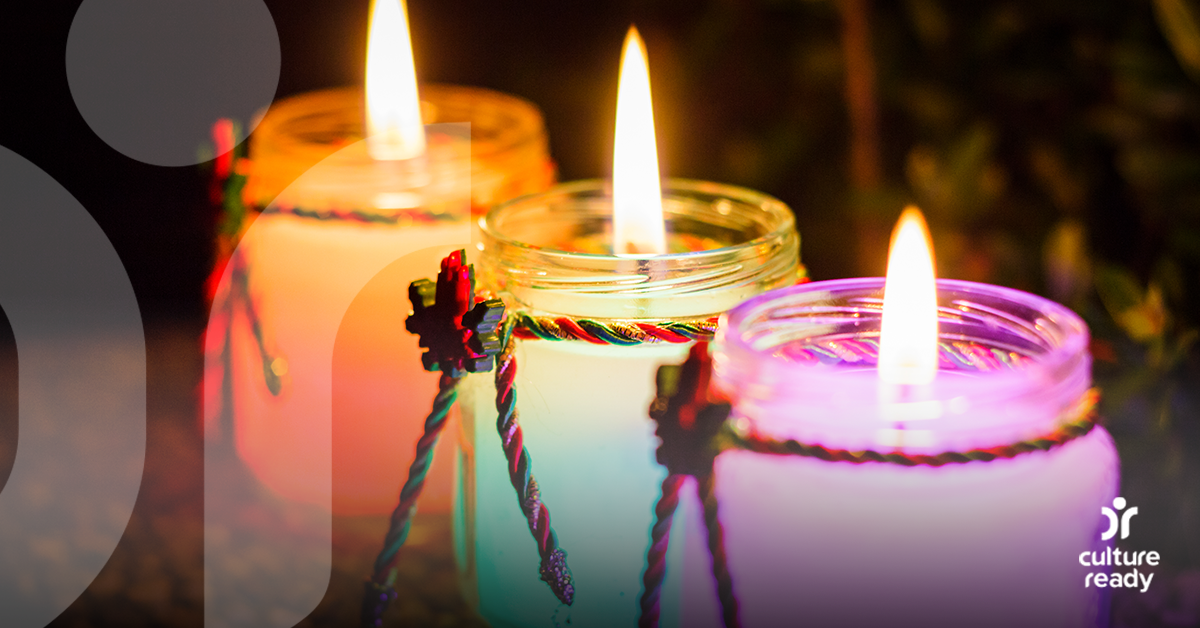Christmas Traditions Around the World
In the United States, Christmas festivities take over the entire month of December—and oftentimes the month of November as well. We associate Christmas with snow, Christmas trees, stockings hung by the fireplace, children visiting Santa and sending their Christmas lists to him in the mail. But all around the world, different countries and cultures celebrate the Christmas season in different ways—from observing the different feast days leading up to and after December 25th, to going to the beach or having barbecues in the southern hemisphere. Here, we look at some of the ways people celebrate the season.
St. Nicholas Day
St. Nicholas Day—celebrated primarily in European countries like Germany, the Netherlands, Poland, and Ukraine—happens early in December. Similar to Christmas Eve, on the night of December 5th children leave out stockings in the hopes of receiving gifts from St. Nicholas. On the 6th (or the 19th in countries that observe the old church calendar), families then celebrate the feast day for St. Nicholas. What they eat varies from country to country, dishes and treats might include spice cookies, breads shaped like St. Nicholas, pfannkuchen (German pancakes), and even St. Nicholas pizza.
Krampusnacht
If you haven’t been a good child in Europe’s Alpine region, then instead of being visited by St. Nicholas, you might be visited by Krampus. Krampus is a terrifying half-man, half-goat creature who frightens children into behaving themselves. Krampusnacht occurs around the same time as St. Nicholas Day, and is a time when adults might dress up as Krampus and wander through towns to scare children. Nowadays there are even Krampusnacht parades and gatherings, filled with people dressed up as Krampus, showing that the creature has become more than simply a way to make children behave, but a cultural icon all on its own.
Day of the Little Candles
In Colombia, the Christmas season begins with Día de las Velitas, or Day of the Little Candles. This is celebrated on the eve of December 8th, the day of the Feast of the Immaculate Conception, and involves the lighting of candles and paper lanterns across the country. People make a wish for each candle lit. Smithsonian Magazine notes that in different parts of the country, the celebrations look a little different: “In and around Medellín, for example, people place the candles in the streets, often creating unique designs with the candles as they burn out, and in Barranquilla people place the candles in their windows or in plastic farolitos (luminarias) as it can be too windy for candles to burn on their own outdoors.”
St. Lucia Day
In Sweden, families celebrate St. Lucia day on December 13th. One of the most iconic traditions of St. Lucia day festivities is the tradition of a girl, dressed in a white gown, wearing a wreath of candles on her head—these days it they are more likely to use electric candles instead of real ones, but the effect is still the same. This tradition has a few different backstories, but the idea is that St. Lucia is the bearer of light. Boys also participate in St. Lucia Day celebrations and processions by carrying stars and wearing paper cone hats. Festive food and drink “include ginger snaps and sweet, saffron-flavoured buns (lussekatter) shaped like curled-up cats and with raisin eyes,” accompanied by mulled wine or coffee.
Three Kings Day
The Epiphany, or Three Kings Day, is celebrated on January 6th across Latin America and Spain. Like Christmas and St. Nicholas Day, children leave out shoes or stockings to receive gifts from the Three Kings who had given gifts of gold, frankincense, and myrrh to baby Jesus at his birth. The day is also marked by parades and other festivities: for example, in Mexico, “bakers make a ‘rosca del rey’, a sweet bread meant to represent a King's crown, that is a mile long.” The rosca del rey usually has a baby Jesus tucked inside, and the person who finds it will then prepare tamales for the Day of the Candles in February. Other traditions include leaving out grass or hay for the Three Kings’ camels.
Christmas in the Southern Hemisphere
In the U.S., we associate the holiday season with snow, dressing up in warm coats and mittens, and sipping hot cocoa by the fire. Many Christmas carols are about wintry weather. But in the southern hemisphere, Christmas takes place during summer. Does this change how Christmas is celebrated? In Australia, the typical Christmas Day spread might consist of “seafood platters, fish, cold turkey and ham, pavlova, and of course, a glass of ultra-chilled bubbly,” along with trips to the beach or the pool. Similar to Canada and England, they also have Boxing Day on the 26th, where they might visit stores for Boxing Day sales. And in South Africa, they might barbecue, or braai, outdoors with friends and family, eating things like mince pie, glazed ham, turkey or roast duck. While the holiday looks different from the wintry season up north, the idea is the same: it is a day to spend with family, exchange gifts, and celebrate the season.
Do you celebrate any of these holidays? What holiday traditions are unique to your family? Tell us about them on Facebook or Twitter.
Learn more:
- 9 Winter Holidays Around the World
- 8 Winter Traditions from Around the World – LifeSavvy
- St Nicholas Day Customs Around the World
- Meet Krampus, the Christmas Devil Who Punishes Naughty Children
- Krampus: Saint Nicholas' Dark Companion
- Colombia Begins the Christmas Season With These Beautiful Light Displays
- 'Dia De Las Velitas' Celebrated In Colombia To Honor The Feast Of Immaculate Conception
- St. Lucia Day in Sweden
- Lucia in Sweden
- When Is Three Kings' Day and How Is It Celebrated?
- Three Kings' Day Celebration: History And Traditions Behind 'El Día De Los Reyes'
- How to celebrate Christmas in the Southern Hemisphere
